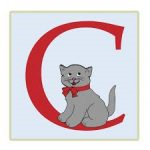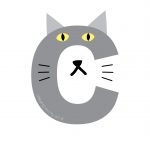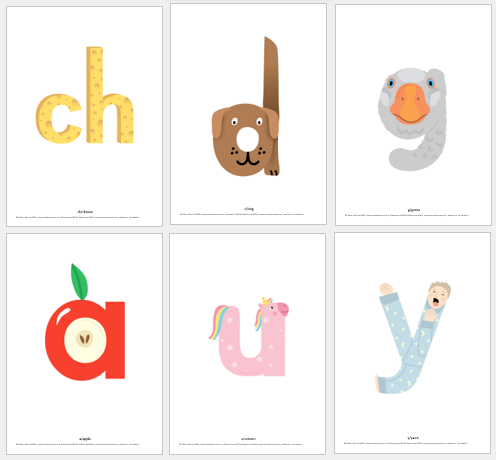Embedded picture mnemonics A4
$AUD11.00
New, improved Embedded Picture Mnemonics in A4 poster size, with larger pictures and some new ones. Download and print the version that best matches your accent/setting (UK/Aust/NZ/non-rhotic, US/rhotic or less urban/formal Aussie).
These sets of colourful, fun illustrations represent all the speech sounds of English and include all the letters. Each has a letter or spelling (e.g. h, i, sh, ou) integrated into a picture representing a word containing that sound (e.g. house, insect, shells, cloud). This helps children learn sound-letter relationships more easily than simply pairing letters with pictures.
Use these embedded picture mnemonics to create friezes, displays or Sound Walls, and for group word chain/building activities.
In stock
Description
When teaching children sound-letter relationships, integrating letter shapes into relevant pictures has been shown to be more effective than just associating letters with a relevant picture, as occurs in typical alphabet friezes/charts. The embedded picture mnemonic on the right below is thus more likely to help learners remember the letter C and the main sound it represents than the image on the left.
 |
 |
You can watch US expert Dr David Kilpatrick explaining this at 18:40 on the video clock here, read about it on p272 of his excellent, accessible book, read relevant research for yourself here, here, here and here, or try this 2021 blog by US expert Timothy Shanahan.
You can use these posters to make friezes or wall charts, or in whole class/group word-building sequences/word chains of the type seen here using the smaller, flashcard size with one student:
Consonants in the set are grouped in voiced-voiceless pairs by sound type (stops, nasals, fricatives, glides, liquids). Keeping voiced-voiceless pairs of sounds together helps you explain why they sometimes use each other’s spellings e.g. the /v/ in ‘of’, the /z/ in ‘is’, and the /s/ in ‘pretzel’.
‘Short’ vowel sounds in the set are followed by ‘long’ vowels, and then the ‘r-controlled’ and other vowels. All the ‘long’ vowels are now represented by single letters, as these are their most common spellings (because most English words are polysyllabic). This should help children understand that many sounds share a spelling. ‘Long’ and ‘short’ vowels often alternate in related words, for example the ‘a’ in ‘volcano-volcanic’, ‘e’ in ‘athlete-athletic’, ‘i’ in ‘child-children’, ‘o’ in ‘episode-episodic’, and ‘u’ in ‘introduce-introduction’.
These embedded picture mnemonics can be used to build Sound Walls, which are more useful for teaching children the logic of our writing system than alphabet friezes/charts or Word Walls which start from letters (the unknown) and work towards sounds (already well-established in children’s mouths when they start school). The mnemonics explicitly show that English has many more speech sounds than letters, and that many sounds are spelt with letter combinations.
Sound Walls should be gradually co-constructed with children, refreshing words as new vocabulary is learnt. Working from sound to print helps you to give simple, clear, truthful explanations about how English spelling works, and allows you to adjust your teaching to your learners’ accent(s).
Once children are aware of a sound and know one of its spellings, other ways it can be spelt can be added to the relevant mnemonic in groups, like this:

These mnemonics were devised with a talented, tolerant, patient, Melbourne illustrator called Cat MacInnes (www.catmacinnes.com). There are now three sets – one for speakers of British, NZ, Australian and other (non-rhotic) Englishes, one for speakers of American (rhotic) English with e/egg, o/octopus, aw/claw and optional wh/whale, and a less urban/formal Aussie one with k/kangaroo, u/undies (back by popular demand) and ur/surf.
You get all three sets, because the website shop doesn’t know what your accent is. Use the set that suits you best. Feel free to swap in a few mnemonics from a different set if they suit your accent/tastes/learners better.
Please save the file(s) you need to your computer (you get three chances to do this, in case of computer crashes, power outages etc) before you colour print what you need for your students. The price of the mnemonics assumes that they will be bought by a teacher or therapist for use with their class/caseload. If you’d like to use them in several classrooms, or several people want to use them, please buy one copy for each classroom/full-timer. Artists should be paid properly for their work, and their sales help keep the Spelfabet website going.
Last updated 21 May 2023
Related products
 The Spelfabet shop has affordable, downloadable spelling teaching resources.
The Spelfabet shop has affordable, downloadable spelling teaching resources.






